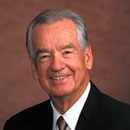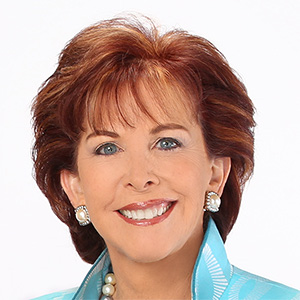US consumers dial back in sign of anxiety heading into holidays
Published in Business News
U.S. consumers showed signs of fatigue leading up to the longest government shutdown, and their outlook has worsened ever since, sending a note of caution heading into the holiday-shopping season.
Retail sales, not adjusted for inflation, rose a tame 0.2% in September after several months of more robust spending, according to data released Tuesday. A more current report from the Conference Board showed consumer sentiment slid to the lowest in seven months, reflecting anxiety about the labor market and the economy.
“It’s a picture of consumption — which has been a real engine of growth over the last few years — slowing quite a lot into the end of this year,” said Oliver Allen, senior U.S. economist at Pantheon Macroeconomics.
Recent corporate earnings show consumers have pulled back on some big-ticket items and are seeking bargains. But retailers like Kohl’s Corp., which joined Best Buy Co., Abercrombie & Fitch Co. and Dick’s Sporting Goods Inc. in raising its forecast on Tuesday, suggest that despite their anxiety about the economy, shoppers are still willing to spend on brands they recognize and trust.
At Best Buy, demand during back-to-school shopping and an October sale was better than analysts forecast. That performance has led executives to predict that Black Friday will be stronger than in past years, Chief Executive Officer Corie Barry told journalists on a call. She said the electronics retailer is expecting a “very strong Cyber Monday.”
In addition, the Conference Board’s November sentiment measure was probably distorted somewhat by the shutdown as responses were collected through Nov. 18, a few days after the shutdown ended, said Jeffrey Roach, chief economist at LPL Financial. The gauge may post a small recovery in December, now that the federal government has reopened, Eliza Winger of Bloomberg Economics said in a note.
Wholesale prices
The release of September retail sales was delayed by the shutdown. Another postponed government report published Tuesday, the producer price index, showed a relatively modest pickup in wholesale inflation in September, excluding volatile energy and food costs. Combined, the data bolstered the likelihood that Federal Reserve officials will lower interest rates when they next meet on Dec. 9-10, according to some economists.
“Spending faded heading into the government shutdown, suggesting the economy almost came to a standstill” in the fourth quarter, said Sal Guatieri, senior economist at BMO Capital Markets. “Overall, there is just enough softness in today’s two reports — with respect to the economy’s resilience and inflation — to keep market expectations primed for another Fed rate cut” next month.
Policymakers remain divided over whether to lower interest rates as they debate the employment outlook with inflation still running above their goal. Thanks to the shutdown, they won’t have key government data for recent months on either before they meet.
Pre-shutdown economy
The pre-shutdown economy — through the end of September — is coming into view. In the September retail sales data, spending fell in discretionary categories like electronics, clothing and sporting goods.
The figures suggest consumers lost some momentum at the end of an otherwise solid third quarter. So-called control-group sales — which feed into the government’s calculation of goods spending for gross domestic product — fell 0.1%, declining for the first time in five months.
“These data position for a slowdown in spending heading into year-end amid the continued moderation in the jobs market and compounding price gains weighing on households’ ability to spend,” Wells Fargo & Co. economists Tim Quinlan and Shannon Grein said in a note.
Aggregate consumer spending is increasingly being supported by the wealthiest households, while lower- and middle-income cohorts are strained by slower pay gains and rising costs for essentials.
The wholesale inflation data showed higher energy and food costs. Those offset more modest advances in prices of other goods, suggesting companies were limiting the degree of price hikes to compensate for tariffs. Excluding food and energy, the core producer price index climbed 2.6% from a year ago — the smallest gain since July 2024.
“The latest PPI data pose no obstacle to a Fed rate cut,” excluding the food-price component, Carl Weinberg, chief economist at High Frequency Economics, said in a note. “However, they offer no incentive to cut rates again, either, and the strong increase in food prices argues against further easing.”
Consumer worries about the job market were evident in a separate report that showed private payrolls fell an average of 13,500 per week in the four-week period ending Nov. 8, according to a preliminary estimate from ADP Research and the Stanford Digital Economy Lab. The two previous weekly reports also showed declines.
The government’s September employment report last week showed solid growth in payrolls, although the gains came mostly from two sectors and the unemployment rate ticked higher.
The pockets of consumer strength highlighted by Best Buy and other retailers reflect a gap between how people say they feel in surveys and how they actually spend.
“Consumer spending has been holding up quite well despite faltering confidence. The disconnect must mean that incomes are rising briskly. But the payroll report says incomes are slowing,” High Frequency Economics’ Weinberg said. “So the data are not sending a clear message right now.”
_____
With assistance from Nazmul Ahasan, Jarrell Dillard, Matt Townsend, Vince Golle, Lily Meier and Jeannette Neumann.
_____
©2025 Bloomberg News. Visit at bloomberg.com. Distributed by Tribune Content Agency, LLC.












Comments